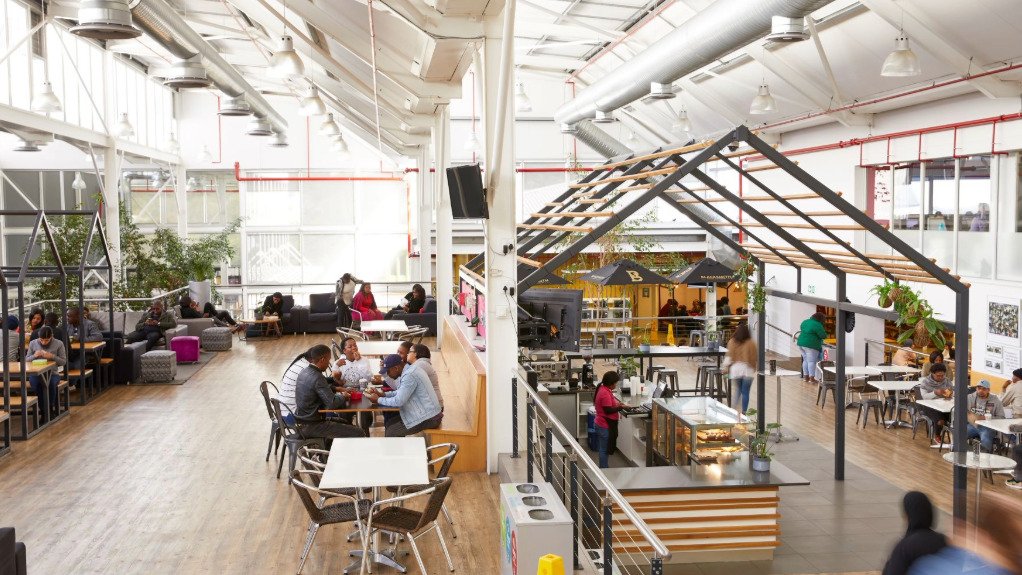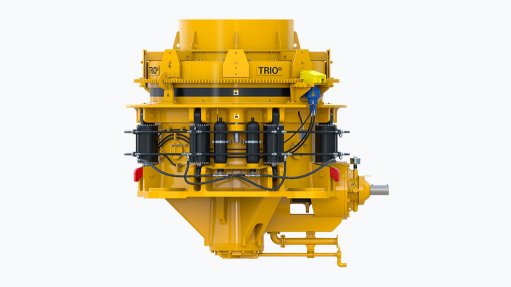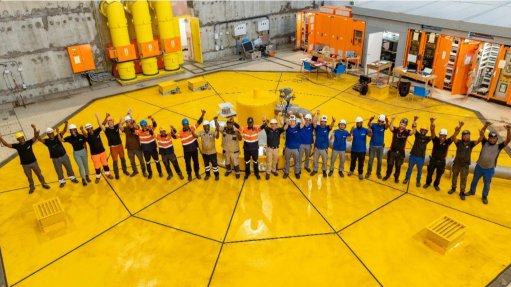Updated rating tool facilitates more comprehensive ‘green outcomes’


SUSTAINABLE PATHWAY The upgrades rating system offers a Climate Positive pathway, designed to mainstream carbon-aware building practices into “business as usual” operations as 2030 and the Net Zero goals associated with it approach
Photo by GBCSA
The Green Star New Buildings and Major Refurbishments version 2 (Green Star New Build V2) tool, developed by non-profit Green Building Council South Africa (GBCSA), incorporates updated sustainability science, new global best practices and environmental, social and governance (ESG) considerations, to facilitate more “holistically green buildings”.
The Green Star New Build V2 tool assesses buildings on their design features at the tender stage or upon construction or project completion. It has eight categories that guide the assessment.
The categories include “Responsible”, which recognises activities that ensure the building is designed, procured, built and handed over in a responsible manner; “Healthy”, which ensures that the health and wellbeing of occupants is considered; “Resilient”, wherein building owners demonstrate that risks that threaten the short- and long-term performance of the building have been identified and addressed; “Positive”, which rewards lower emissions and efficient water and energy use; “Places”, which incentivises the integration of buildings into their surrounding context; “People”, which focuses on social, community, and inclusive aspects of sustainable buildings; “Nature”, which rewards buildings that minimise impact on the natural environment and enhance biodiversity; and “Leadership”, which rewards actions that drive market transformation, innovation and exceptionality. These categories collectively cover 37 credits that project teams can target to increase their building’s sustainability.
GBCSA special projects technical manager Dash Coville notes that Green Star New Build V2 also introduces 14 minimum requirements across most of these categories to ensure that the overall positive outcome of every certified building can be clearly communicated and understood. After minimum requirements have been met, a building can still take a specific focus on, for example, energy or water consumption, but from the base of best practice across the spectrum of sustainability themes.
Coville continues that Green Star New Build V2 is aimed at making the rating system “clearer, more relevant, more holistic”. Its broader scope, combined with many behind-the-scenes streamlining systems, should mean the tool, and green building certification in general, is more understandable and its value clearer to a broader audience.
He states that the upgraded rating system also offers a Climate Positive Pathway, where there are further minimum expectations that focus on decarbonisation specifically. This sustainability pathway has been designed to mainstream carbon-aware building practices into “business as usual” operations as we head toward 2030 and the Net Zero goals associated with this.
“This Climate Positive Pathway has a focus on upfront carbon, meaning the carbon associated with the materials used in the building, as well as operational energy use, and refrigerants use,” explains Coville.
He notes that on the energy front, the tool looks at the carbon impact of the building and its predicted performance, while also focusing on HVAC-R refrigerants.
Coville adds that refrigerants specifically are dealt with in the “Positive” category credit under “other carbon emissions”.
While cost is always a factor in property development decision-making, the points towards Green Star certification that can be earned demonstrate the immediate value that incurring costs for “green” targets can provide.
This acts as a proxy for the eventual environmental benefits that clearly and directly benefit that specific building.
“This principle of providing an immediate proxy of the value of good sustainability action that directly benefits the building is the heart of many sustainability reporting or measurement systems,” highlights GBCSA research and content coordinator Abi Godsell.
Health and Comfort
According to Coville, the “Healthy” category features the “clean air” credit. He states that providing sufficient clean air is critical for occupants’ health and wellbeing, however, he cautions that, from an energy perspective, there could be a potentially adverse energy impact.
The “clean air” credit requires the building to meet specific performance criteria and, importantly, aligns with the new SANS10400-Part O:2025 Standard. It demonstrates the tangible benefits of the fresh air being delivered into the building.
He points out that “this integrated process ensures that the trade-offs can be understood, and solutions can be implemented where both “clean air” and “energy efficiency” can be achieved. He suggests that it also fosters the integrated design thinking that underpins another credit in the Tool, the “thermal comfort” credit, which ensures spaces are comfortable for occupants while also introducing broader themes such as resilience, efficiency, and materiality.
Godsell reiterates that GBCSA certification, as a “whole building” accreditation, particularly in Green Star New Build V2, disincentivises excellence in one aspect at the cost of poor performance in another.
Additionally, passive design, integrated efficiency and smart systems are ways of resolving the apparent tension between indoor environmental quality and reduced electricity consumption.
“Certification provides the framework, and a cohort of trained experts – such as Green Star accredited professionals – to assist projects with implementing that framework, which allows designs to be reimagined around the Green Star principles,” Godsell states.
Coville stresses that the property development industry cannot merely comply with South African National Standards and believe that is sufficient in meeting our decarbonisation goals, adding that Green Star South Africa aims to provide guidance so that people can achieve far more aspirational sustainability outcomes.
“From changes to wording that reflect local language use, to the inclusion of new credits reflecting local climate and socioeconomic contexts, Green Star New Build V2 has been constructed from the ground up to operate well and responsibly in Southern Africa,” Godsell concludes.
Article Enquiry
Email Article
Save Article
Feedback
To advertise email advertising@creamermedia.co.za or click here
Press Office
Announcements
What's On
Subscribe to improve your user experience...
Option 1 (equivalent of R125 a month):
Receive a weekly copy of Creamer Media's Engineering News & Mining Weekly magazine
(print copy for those in South Africa and e-magazine for those outside of South Africa)
Receive daily email newsletters
Access to full search results
Access archive of magazine back copies
Access to Projects in Progress
Access to ONE Research Report of your choice in PDF format
Option 2 (equivalent of R375 a month):
All benefits from Option 1
PLUS
Access to Creamer Media's Research Channel Africa for ALL Research Reports, in PDF format, on various industrial and mining sectors
including Electricity; Water; Energy Transition; Hydrogen; Roads, Rail and Ports; Coal; Gold; Platinum; Battery Metals; etc.
Already a subscriber?
Forgotten your password?
Receive weekly copy of Creamer Media's Engineering News & Mining Weekly magazine (print copy for those in South Africa and e-magazine for those outside of South Africa)
➕
Recieve daily email newsletters
➕
Access to full search results
➕
Access archive of magazine back copies
➕
Access to Projects in Progress
➕
Access to ONE Research Report of your choice in PDF format
RESEARCH CHANNEL AFRICA
R4500 (equivalent of R375 a month)
SUBSCRIBEAll benefits from Option 1
➕
Access to Creamer Media's Research Channel Africa for ALL Research Reports on various industrial and mining sectors, in PDF format, including on:
Electricity
➕
Water
➕
Energy Transition
➕
Hydrogen
➕
Roads, Rail and Ports
➕
Coal
➕
Gold
➕
Platinum
➕
Battery Metals
➕
etc.
Receive all benefits from Option 1 or Option 2 delivered to numerous people at your company
➕
Multiple User names and Passwords for simultaneous log-ins
➕
Intranet integration access to all in your organisation


















